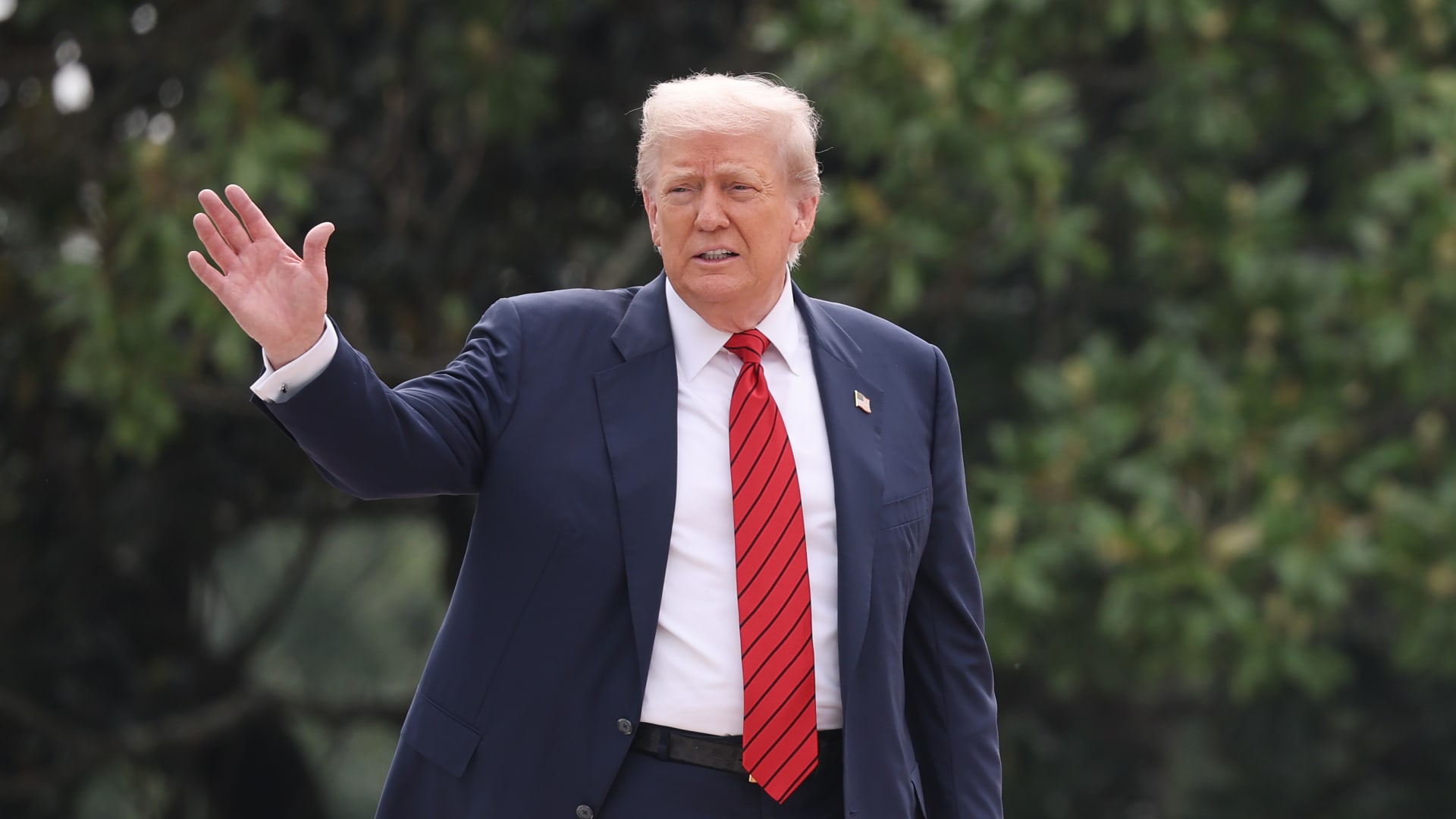
President Donald Trump has tried to justify firing former Bureau of Labor Statistics Commissioner Erika McEntarfer by claiming that her agency’s gold standard employment reports were “rigged” in order to harm him politically.
Trump has provided no evidence to support his allegation. Nonetheless, he has repeatedly claimed that the BLS issued “phony” strong-looking jobs numbers during the last year of the Biden administration, only to revise them sharply downward right after the 2024 presidential election.
“Just days before the [Nov. 5 presidential] election, they put out numbers that it was like the country was on fire,” Trump claimed Tuesday morning on CNBC’s “Squawk Box.”
“And then they did a revision about two weeks later, and the revision was down by almost 900,000 jobs,” he alleged.
When a host pushed back, Trump doubled down, claiming “the numbers were rigged.”

“They announced these phenomenal numbers the two days before the election and a little bit before that, always these great numbers … But after I won the election, then they announced a downward number, in other words, to bring it back to reality,” Trump said.
But Trump’s account of how the jobs report revisions were issued in 2024 is wrong. And the true timeline undermines his claims.
August 2024: Major downward revision
It’s true that the BLS issued a large revision to its jobs tally last year: The agency revealed that the U.S. economy added 818,000 fewer jobs than originally reported for the year ended March 2024.
But that revision did not come after the election, as Trump suggested Tuesday morning. Rather, it was issued in August 2024 — more than two months before the election, and after then-Vice President Kamala Harris had taken the reins as the Democratic nominee.
Trump pounced on the figure at the time. “New Data from the Bureau of Labor Statistics shows that the Administration PADDED THE NUMBERS with an extra 818,000 Jobs that DO NOT EXIST, AND NEVER DID,” he claimed in an Aug. 21 post on Truth Social.
The figure came in the BLS’ preliminary annual benchmark revision, when its employment estimates derived from surveys are calibrated against state unemployment insurance tax records.
The final benchmark released in February, months after the election, revised hiring down by 598,000 — lower than the preliminary figure from August.
October 2024: Hiring slows dramatically
Trump is also wrong to claim that the BLS issued “phenomenal numbers” just before the 2024 election.
In fact, the final jobs report before the election revealed a sharp slowdown in October hiring, after a surge the previous month.
That Nov. 1 report — less than a week before Election Day — showed just 12,000 workers had been added to U.S. nonfarm payrolls in October.
At the time, it was the smallest monthly job gain in nearly four years, and it fell well below experts’ already-low expectations.
As soon as the Nov. 1 report was released, it was immediately weaponized for political purposes — by Trump, who used the data to bash Harris.
“Today’s jobs report is a great embarrassment for our Nation. Kamala has lied for years about their pathetic job growth, which has never been real,” Trump wrote on Truth Social Nov. 1. “America is a Nation in Decline because Sleepy Joe, and Lyin’ Kamala, didn’t do their job.”
The BLS would later revise that weak jobs figure upward — but not until after Trump had won the election.
Moreover, the sharp decline in October’s initial report is now understood to have been driven by several factors outside of anyone’s control.
Major labor strikes at Boeing and at U.S. ports had the short-term effect of removing thousands of workers from payrolls in October.
Hurricanes in the Southeast also impacted that initial report by closing roads and businesses, making it more difficult to collect accurate data.

The White House did not respond to CNBC’s request for comment or further explanation of Trump’s remarks.
A Labor Department official, in comments provided by the White House, criticized McEntarfer’s leadership, saying that she waited too long to inform the department about data-collection challenges at the BLS.
But these are not the critiques Trump has made himself.
Instead, Trump announced McEntarfer’s firing in a Friday afternoon social media post that accused her of having “faked the Jobs Numbers before the Election to try and boost Kamala’s chances of Victory.”
CNBC has reached out to McEntarfer for comment.
“I have directed my Team to fire this Biden Political Appointee, IMMEDIATELY,” Trump wrote. “Important numbers like this must be fair and accurate, they can’t be manipulated for political purposes.”
The post came hours after the initial jobs report for the month of July showed weaker-than-expected growth.
The BLS in that report also issued two revisions to initial reports from previous months. Both of them revised the jobs numbers sharply downward, shaving a combined total of 258,000 jobs off the year’s tally.
The downward revisions and the missed expectations for July spurred a sharp decline in financial markets. By Friday’s close, the Dow Jones Industrial Average had fallen more than 500 points.
The move to fire McEntarfer drew widespread criticism over fears that government employment data, which is relied upon to gauge the health of the U.S. economy and make major policy decisions, will become politicized and untrustworthy.
Experts also say that even if a BLS commissioner wanted to manipulate monthly jobs report data, it would be impossible given how the data is collected, analyzed and released to the public.
The White House has defended Trump’s decision, with National Economic Council Director Kevin Hassett saying on NBC News that the job revisions “are hard evidence” in support of the president’s claims.
Trump said he plans to announce McEntarfer’s successor in the coming days.





